
Applications for the Marion Paviour Award 2025 are now open!
Application Guidelines
The purpose of this award is to further research into the conservation of birds of prey and is intended to support early-career researchers working towards this goal. Please consider the following information before making an application:
All uses of funds will be considered, however preference will be given to those applying for support for fieldwork, conference fees to present work, or travel costs (for fieldwork or conference attendance) over equipment costs.
Applications are required to submit the following:
The deadline for applications is 31 August 2025. To apply please email your application to conservation@hawkconservancy.org.
For inspiration on our past winners, have a look below!
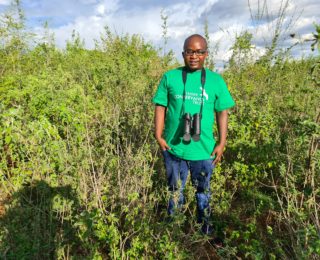
Poisoning events fuelled by conflict with large carnivores are not uncommon in many countries where coexistence with large carnivores is part of everyday life. Poisoning carcasses for large carnivores, like lions or leopards, to feed upon is seen as a strategy to decrease threats to livestock. Unfortunately, many species can be impacted by this kind of approach. Kioko’s project focuses on reducing human-wildlife conflict and protecting critically endangered White-backed Vulture (Gyps africanus) and Rüppell’s Vulture (Gyps rueppelli) populations, by engaging, collaborating with and empowering local communities.
Using his Marion Paviour Award, so far Kioko:
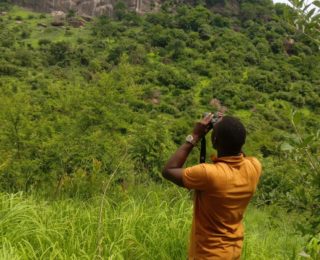
Rüppell’s Vultures (Gyps rueppelli) are listed as Critically Endangered on the IUCN Red List of Threatened Species. The only known breeding colony of this species in Uganda is found in Luku Central Forest Reserve. As the first project of its kind in Uganda, this work will be the foundation for future efforts to conserve this species of vulture. Ivan is using his Marion Paviour Award to gather data to determine the size of the breeding population in this area, as well as identifying factors that influence nest location choices of Rüppell’s Vultures. He is also studying their breeding success rate and what factors could be influencing this.
Using his Marion Paviour Award, Ivan:
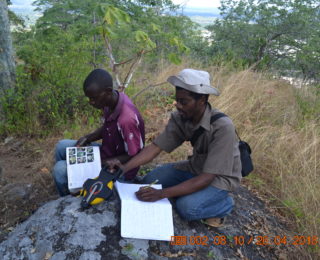
The Martial eagle (Polemaetus bellicosus) is listed as Endangered on the IUCN Red List of Threatened Species. One of the biggest threats faced by these eagles is habitat loss, particularly the loss of large trees they require for nesting, that are being cut down to allow space for crop fields. It is thus vital to assess the extent to which a population persists in places they have been seen in. Sopani used his Marion Paviour Award to help collect vital data on the presence and space use of the Martial Eagle in and around Vwaza Marsh Wildlife Reserve, Malawi, where the knowledge of their existence and conservation status is extremely limited.
Using his Marion Paviour Award, Sopani:
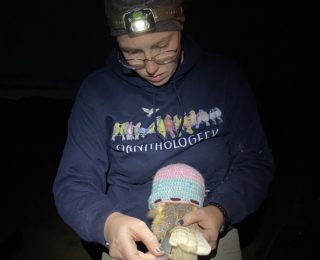
In the vineyards of Napa Valley, California, wine grape growers are installing nest boxes to encourage Barn Owls (Tyto alba) to nest locally. There is an expectation that Barn Owls provide pest control services in the vineyards through their consumption of rodents. Previous research in this system showed Barn Owls tend to select wooden nest boxes at least 3 metres high, with high proportions of grasslands surrounding the nest box. Jaime built upon this, using her Marion Paviour Award to study where Barn Owls prefer to nest, how healthy they were and what effects nesting location had on reproduction success.
Using her Marion Paviour Award, Jaime:

Eurasian Kestrels (Falco tinnunculus) are facing continuous population decline in the UK, the reason for which is unclear. Kestrels are an adaptable species, and so any changes in landscape or prey availability may have resulted in the adoption of novel diets, which could have unknown consequences for their fitness and ability to survive. Georgia noticed that a lot of the UK kestrel diet literature is fairly dated, produced several decades ago, and habitats and prey availability have likely changed since. As such, she used her Marion Paviour Award to understand the diet of contemporary kestrels, providing the UK conservation managers, policy makers and wider science community with the best information with which to build strategies to stop the decline in UK kestrel populations.
Using her Marion Paviour Award, Georgia:
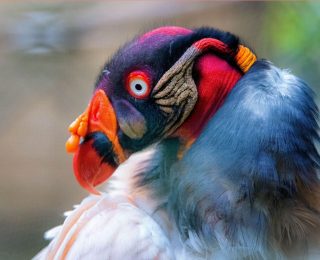
King Vultures (Sarcoramphus papa) are one of the less-studied raptors in South America. Their population decline, as with all vultures, can have grave wider ecological and environmental consequences. Diego used his Marion Paviour Award to help fund his work in central Bolivia, surveying roosts, foraging grounds and nests of King Vultures. These represent critical sites for their conservation, with the potential to provide important information on their status, distribution and population abundance in these areas. Such information helps managers, decision makers and local communities to be better informed on how to effectively preserve and protect King Vultures.
Using his Marion Paviour Award, Diego:
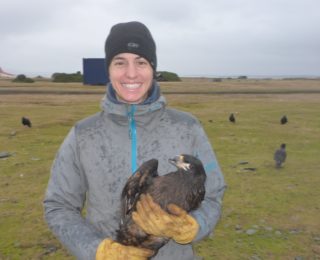
The Striated Caracara (Phalcoboenus australis) is listed as Near-Threatened on the IUCN Red List of Threatened Species. Persecution by humans has been a considerable reason behind their drop from a historically healthy abundance to the current, much lower, population estimate. Katie used her Marion Paviour Award to help fund her trip to the Falkland Islands, which is thought to hold much of their population. Katie’s work focused on understanding the movement patterns of caracaras. By knowing how and where a species moves, conservationists are better equipped to focus their efforts in the areas that appear most important to that species’ well-being.
Using her Marion Paviour Award, Katie: